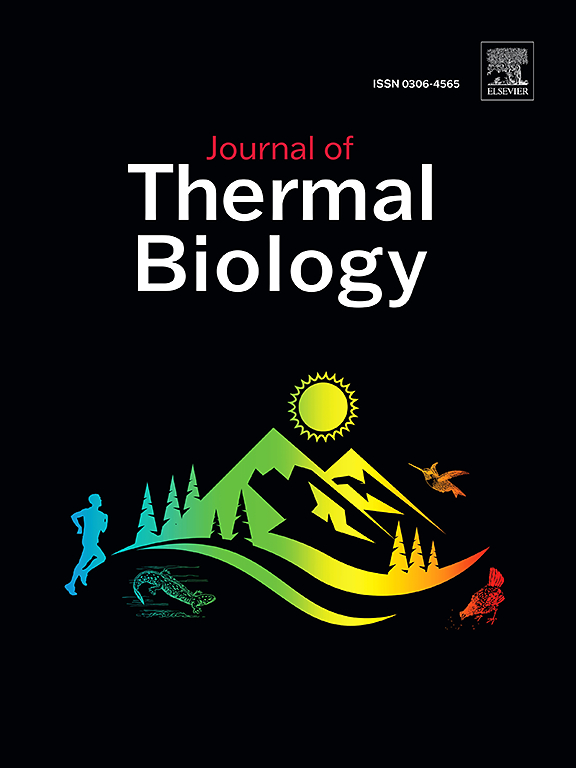转录组学分析揭示了两种虾虎鱼耐寒性的调控途径和关键基因
IF 2.9
2区 生物学
Q2 BIOLOGY
引用次数: 0
摘要
与鳗鱼虾虎鱼家族(虾虎鱼科)密切相关的物种已经进化出不同的低温抗性,但分子机制仍然知之甚少。本研究采用比较转录组学方法鉴定了两种鳗鱼虾虎鱼耐寒性相关的关键途径和基因。分析了耐冷O. lacepedii和冷敏感O. rebecca在对照组(23°C)和冷应激组(15°C和11°C)的表达谱。通过转录组分析和维恩图分析,鉴定出与种间抗寒性差异密切相关的差异表达基因。GO和KEGG富集分析显示,与细胞稳态、PPAR信号通路、细胞呼吸和氧化磷酸化相关的过程在鳗鱼虾虎鱼的耐冷反应中被激活。WGCNA分析表明,与产热和微管稳定性相关的枢纽基因,特别是PPARGC1A和α-微管蛋白,可能是造成石杉高耐寒性的原因。这些发现为解剖虾虎鱼耐冷性形成背后的分子机制提供了关键线索。本文章由计算机程序翻译,如有差异,请以英文原文为准。
Transcriptomic profiling revealed the regulatory pathways and key genes associated with cold tolerance in two eel gobies
Closely related species of the eel goby family (Gobiidae) have evolved divergent resistance to low temperatures, but the molecular mechanisms remain poorly understood. This study used a comparative transcriptomic approach to identify key pathways and genes associated with cold tolerance in two eel goby species. Expression profiles of the cold-tolerant O. lacepedii and the cold-sensitive O. rebecca in control (23 °C) and cold stress groups (15 °C and 11 °C) were analyzed. Differentially expressed genes closely linked to interspecific cold tolerance divergence were identified through transcriptome profiling and Venn diagram analysis. GO and KEGG enrichment analyses revealed that processes related to cellular homeostasis, the PPAR signaling pathway, cellular respiration, and oxidative phosphorylation were activated during the cold tolerance response of eel gobies. WGCNA analysis indicated that the hub genes related to thermogenesis and microtubular stability, specifically PPARGC1A and α-tubulin, may contribute to the high cold tolerance in O. lacepedii. These findings provide key clues for dissection of the molecular mechanisms behind the formation of cold tolerance in eel gobies.
求助全文
通过发布文献求助,成功后即可免费获取论文全文。
去求助
来源期刊

Journal of thermal biology
生物-动物学
CiteScore
5.30
自引率
7.40%
发文量
196
审稿时长
14.5 weeks
期刊介绍:
The Journal of Thermal Biology publishes articles that advance our knowledge on the ways and mechanisms through which temperature affects man and animals. This includes studies of their responses to these effects and on the ecological consequences. Directly relevant to this theme are:
• The mechanisms of thermal limitation, heat and cold injury, and the resistance of organisms to extremes of temperature
• The mechanisms involved in acclimation, acclimatization and evolutionary adaptation to temperature
• Mechanisms underlying the patterns of hibernation, torpor, dormancy, aestivation and diapause
• Effects of temperature on reproduction and development, growth, ageing and life-span
• Studies on modelling heat transfer between organisms and their environment
• The contributions of temperature to effects of climate change on animal species and man
• Studies of conservation biology and physiology related to temperature
• Behavioural and physiological regulation of body temperature including its pathophysiology and fever
• Medical applications of hypo- and hyperthermia
Article types:
• Original articles
• Review articles
 求助内容:
求助内容: 应助结果提醒方式:
应助结果提醒方式:


